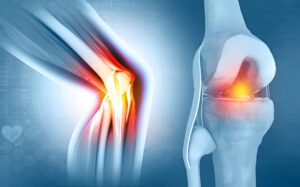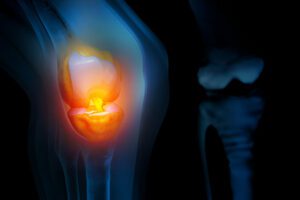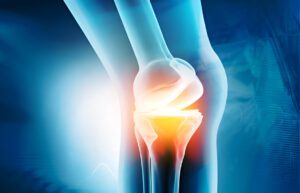The Transformative World of Osteotomy for Bone Correction
In the realm of orthopedic surgery, osteotomy stands as a beacon of hope for those struggling with bone deformities. It’s not just about correcting misaligned bones; it’s about transforming lives by restoring function and alleviating pain. For orthopedic surgeons and physical therapists, understanding the nuances of osteotomy is crucial. For patients, it’s a gateway to improved mobility and quality of life. This blog post will walk you through the intricacies of osteotomy, its long-term outcomes, and the latest advancements that are revolutionizing bone deformity correction.
Understanding Osteotomy and Its Role in Bone Correction

Osteotomy is a surgical procedure that involves cutting and reshaping bones to correct deformities. This procedure is often employed to address issues such as misaligned joints, bowed legs, and some cases of osteoarthritis. By altering the angle or length of a bone, osteotomy can alleviate pain, improve function, and delay the need for joint replacement.
The significance of osteotomy lies in its ability to provide lasting relief and functional enhancement. It’s not a one-size-fits-all solution but rather a tailor-made approach to bone deformity correction. Surgeons need to consider the unique anatomical and functional needs of each patient to determine the best course of action.
Patients often undergo osteotomy to regain the ability to perform everyday activities without discomfort. It’s a procedure that turns back the clock on wear and tear, offering a second chance at an active lifestyle.
Types of Osteotomy in Orthopedic Surgery
In the diverse landscape of orthopedic surgery, there are several types of osteotomy, each with its specific applications and benefits.
High Tibial Osteotomy
This procedure is commonly used to correct alignment in the knee joint, especially in patients with arthritis. By shifting weight from the damaged part of the knee to a healthier area, it alleviates pain and improves mobility.
Periacetabular Osteotomy
This technique is often used to treat hip dysplasia. By reorienting the hip socket, it can improve joint stability and prevent arthritis development. It’s particularly beneficial for younger patients looking to delay or avoid total hip replacement.
Femoral Osteotomy
Femoral osteotomy addresses deformities in the thigh bone, often correcting issues arising from developmental disorders. The procedure ensures proper alignment, enhancing the patient’s gait and functionality.
Each of these osteotomy types requires precise planning and execution. Surgeons must employ advanced imaging techniques and surgical tools to ensure the best possible outcomes for their patients.
Long-Term Outcomes for Osteotomy Patients

Understanding the long-term outcomes of osteotomy is vital for both medical professionals and patients.
Improved Mobility and Function
One of the primary goals of osteotomy is to restore mobility. Patients often experience significant improvements in walking, running, and other physical activities post-surgery. This enhanced function contributes to a better quality of life, allowing individuals to engage in activities they once thought impossible.
Pain Relief
Chronic pain is a common complaint among those with bone deformities. Osteotomy can provide substantial pain relief by correcting alignment and distributing weight more evenly across joints. This alleviation of discomfort is often long-lasting, reducing the need for pain medication and further interventions.
Delayed Joint Replacement
For patients with joint issues, osteotomy can delay the need for joint replacement surgery. By rectifying alignment and function early on, it preserves the natural joint for a longer period, offering a more conservative approach to orthopedic care.
These outcomes highlight the procedure’s efficacy in not just treating symptoms but addressing root causes, offering a sustainable path to healing and recovery.
Real-Life Case Studies of Osteotomy Patients
Examining real-life case studies provides valuable insights into the practical applications and benefits of osteotomy.
Case Study 1: Sarah’s Journey with High Tibial Osteotomy
Sarah, a 45-year-old avid runner, was diagnosed with early-stage arthritis in her knee. Her orthopedic surgeon recommended a high tibial osteotomy to realign the knee and relieve pressure on the affected area. Post-surgery, Sarah experienced significant pain reduction and returned to running within a year, showcasing the procedure’s success in restoring active lifestyles.
Case Study 2: Michael’s Periacetabular Osteotomy Experience
Michael, a teenager with hip dysplasia, underwent a periacetabular osteotomy to improve hip stability. The surgery not only prevented the progression of arthritis but also enabled him to participate in sports without limitations. Michael’s case illustrates the importance of timely intervention and customized treatment plans.
Case Study 3: Emily’s Femoral Osteotomy for Improved Gait
Emily, a young girl with a congenital femoral deformity, faced challenges in walking. Her orthopedic team performed a femoral osteotomy, correcting the alignment and significantly improving her gait. Emily’s transformation underscores the life-changing potential of osteotomy for pediatric patients.
These case studies emphasize the diverse applications and profound impact of osteotomy, offering hope to patients with various bone deformities.
Advancements in Osteotomy Techniques and Technology
The field of osteotomy has seen remarkable advancements in recent years, enhancing both the procedure’s efficacy and patient experience.
Robotic-Assisted Surgery
Robotic technology has revolutionized osteotomy procedures by providing greater precision and control. Surgeons can now perform more accurate cuts and alignments, leading to improved outcomes and reduced recovery times.
3D Imaging and Planning
Advanced imaging techniques, such as 3D modeling, allow for meticulous pre-surgical planning. Surgeons can visualize the exact anatomical structures and tailor their approach, ensuring customized and effective solutions for each patient.
Minimally Invasive Techniques
Minimally invasive osteotomy techniques have emerged, reducing surgical trauma and promoting faster recovery. Patients benefit from smaller incisions, reduced scarring, and shorter hospital stays, making the procedure more accessible and appealing to a broader range of individuals.
These innovations highlight the ongoing evolution of osteotomy, offering new possibilities for bone deformity correction and improving patient outcomes.
Essential Pre- and Post-Operative Care for Osteotomy
Successful osteotomy outcomes rely heavily on comprehensive pre- and post-operative care, involving both medical professionals and patients.
Pre-Operative Preparations
Before surgery, thorough assessments and consultations with orthopedic specialists are crucial. Patients should undergo imaging studies and physical evaluations to determine the best approach. Educating patients about the procedure, expected outcomes, and recovery process is vital to ensure informed decision-making.
Post-Operative Rehabilitation
Rehabilitation plays a critical role in the recovery process. Physical therapists work closely with patients to develop personalized exercise plans that promote healing and restore function. Consistent participation in rehabilitation programs is essential to achieving optimal results.
Patient Involvement and Compliance
Patients must actively participate in their recovery by adhering to medical advice and following prescribed rehabilitation protocols. Staying informed, communicating with healthcare providers, and attending follow-up appointments are key to long-term success.
These steps emphasize the collaborative effort required for successful osteotomy outcomes, highlighting the importance of comprehensive care from diagnosis to recovery.
The Future of Osteotomy in Orthopedic Care
Osteotomy continues to hold a significant place in orthopedic care, offering innovative solutions for bone deformity correction.
Advancements in Personalized Medicine
The integration of personalized medicine approaches is expected to further enhance osteotomy outcomes. Tailoring surgical plans based on individual genetic, anatomical, and lifestyle factors can improve precision and effectiveness, leading to more successful results.
Emerging Technologies and Research
Ongoing research and technological advancements are likely to introduce new techniques and methodologies in osteotomy. From regenerative medicine to bioprinting, these innovations have the potential to reshape the landscape of bone deformity correction.
Expanding Access and Education
Efforts to expand access to osteotomy and educate patients and healthcare professionals about its benefits are crucial. Promoting awareness and understanding of the procedure can empower individuals to seek timely interventions and improve overall orthopedic care.
The future of osteotomy holds great promise, offering new possibilities for patients and healthcare providers alike in the pursuit of enhanced bone health and quality of life.
Osteotomy stands as a transformative solution for individuals with bone deformities, offering long-term outcomes that improve mobility, relieve pain, and delay joint replacement. Through advanced techniques, personalized care, and cutting-edge technologies, osteotomy continues to shape the landscape of orthopedic surgery. For orthopedic surgeons, physical therapists, and patients alike, understanding the intricacies of osteotomy is essential. By sharing experiences, staying informed, and seeking professional advice, we can collectively advance the field and improve the lives of those affected by bone deformities.
Feel free to explore further resources and connect with experts in the field to enhance your understanding and contribute to the ongoing evolution of orthopedic care.

